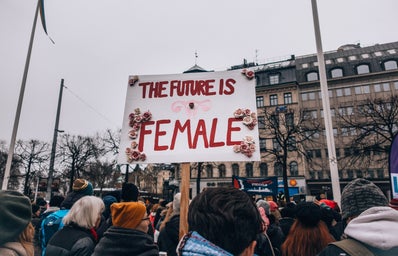In honor of Women’s History month, we should take a moment to appreciate the services that help women take control of their lives and their bodies. A hot topic in the media, Planned Parenthood is the primary organization at risk. What would happen to present and future women without these clinics?
The Statistics
Let’s start off with some hard facts about the services Planned Parenthood’s clinics provide. Personally, these statistics were shocking in the sense that I did not previously know just how many people Planned Parenthood served. According to their 2018-2019 annual report, 9.8 million services were provided to 2.4 million people. Almost 298,000 of those were male patients! Roughly half of those services (4.9 million) were STI testing and treatment-related. Another quarter of those services (2.5 million) were birth control information and services. The last 520,000 services were breast and pap exams.
Of these 9.8 million services provided, abortions accounted for only 4% of them.
If you would like more information, click here for a list of all of their services.
Related: Planned Parenthood Does More Than Just That One Thing
What Do the Stats Mean?
The statistics show us that Planned Parenthood clinics are needed now more than ever. American women and men are visiting these clinics mainly for STI testing, bodily exams, and birth control. All three of those types of services are essential for proper body function and maintenance. In the 21st century, none of them should be compromised and all of them should be considered basic health care.
One of the most important takeaways from their report is the fact that they have so many individuals who depend on their services. Without the option to visit their clinic, 9.4 million health issues would have gone unresolved.
Related: You, Me and my IUD
Planned Parenthood as an “Abortion Business”
In an article published in 2015 by Life News, the author labels Planned Parenthood as an “abortion business.” It is plain to see through the statistics of provided services that this is untrue. The organization attempts to help women through other means, many of which prevent the need for an abortion. However, if an abortion is the choice that the woman makes, they will provide that as well. Essentially, Planned Parenthood is a reproductive health care clinic that also provides abortions as a service.
This is the point where many people may say, “An abortion is not necessary because there is adoption, or the woman could keep the child.” While these are, in fact, options for some women, for other women the only option is to terminate the pregnancy. As of 2017, about 443,000 children are in the foster care system. As for keeping the child, this poses numerous issues for rape/incest cases, those who are economically unstable (more on this to come), and instances where carrying a fetus to term may harm the mother. Moreover, even if a woman has none of these reasons for choosing to get an abortion, her decision is her decision (and only hers). Others, especially men in government, do not get to impose on her reproductive autonomy.
Related: What Would Happen If Planned Parenthood Was Defunded?
A Glimpse into a Planned Parenthood-less America
When you defund Planned Parenthood because you disagree with abortion, you take with it crucial pieces of healthcare that already-living individuals require.
Without STD/STI testing, millions of Americans would become seriously ill.
Without HIV testing, millions would die prematurely because they were not able to take prompt action to fight the virus, and could unknowingly spread the virus.
Without safe and legal abortions, America reverts back to times when women died from self-induced abortions.
Without breast cancer and cervical cancer screenings, the disease would go undetected to the point of no return.
Without birth control and abortion services, unplanned children could suffer under socio-economic distress that will have an effect on their developing bodies.
Without Planned Parenthood, there would be a major deficit in women’s reproductive health resources.
Without taking care of America’s women, how can Women’s History month stand a chance for future generations?


